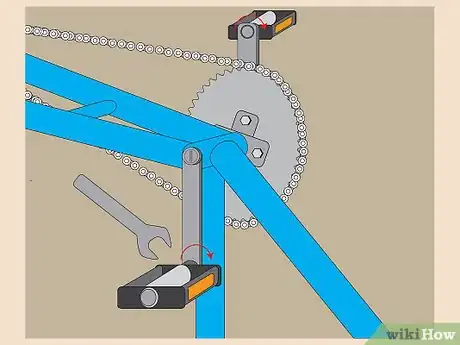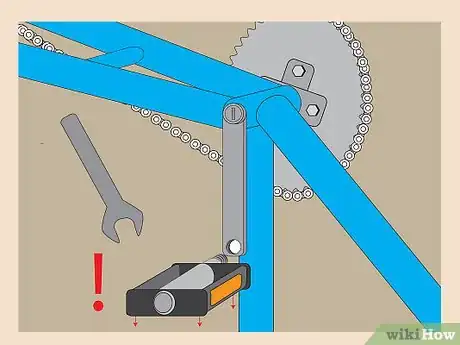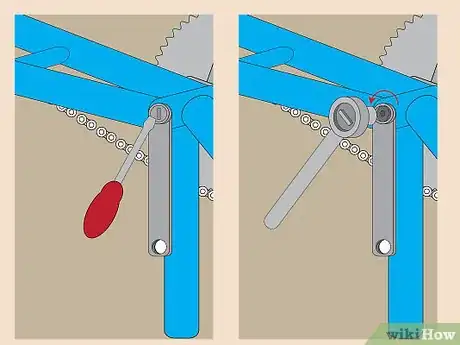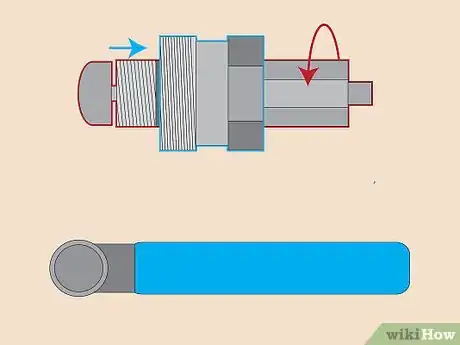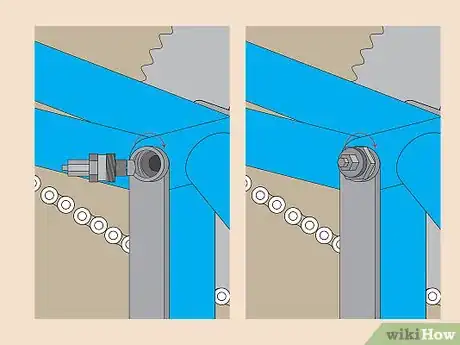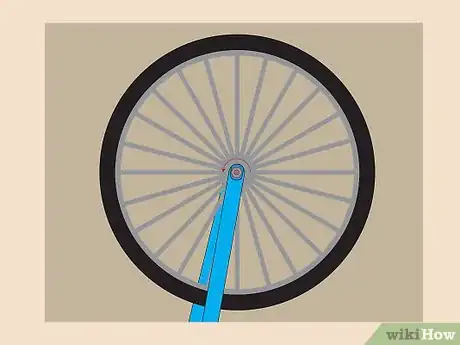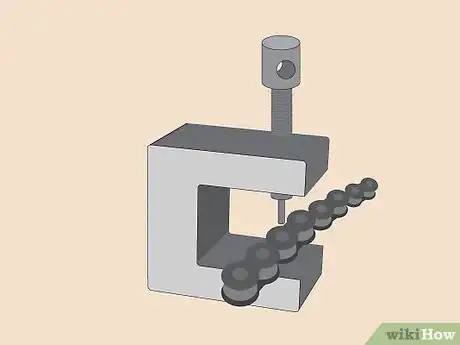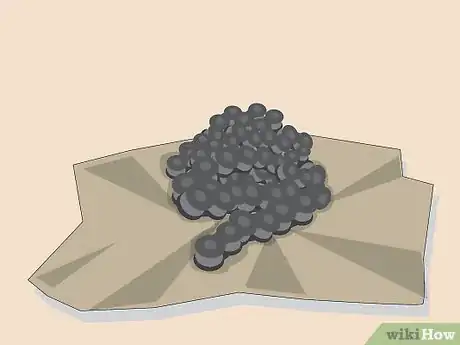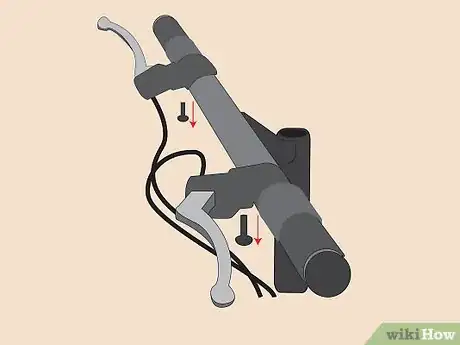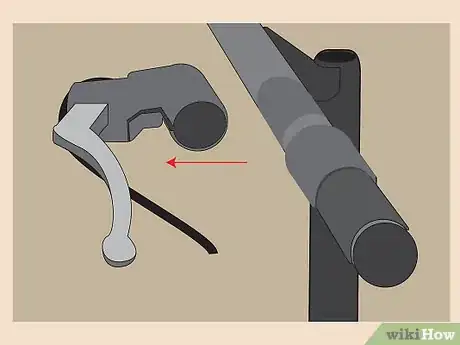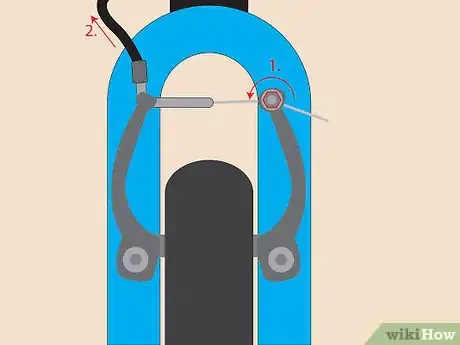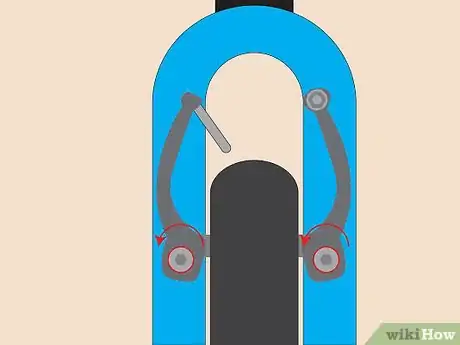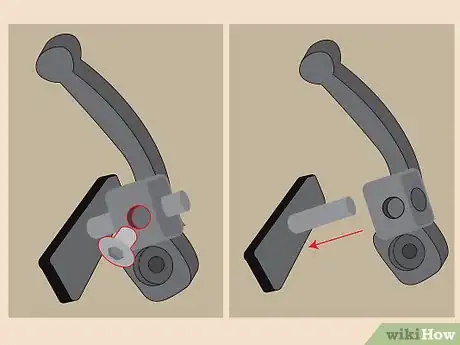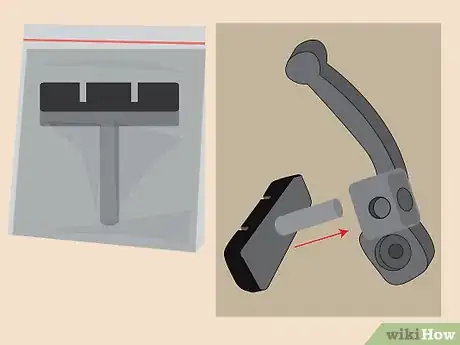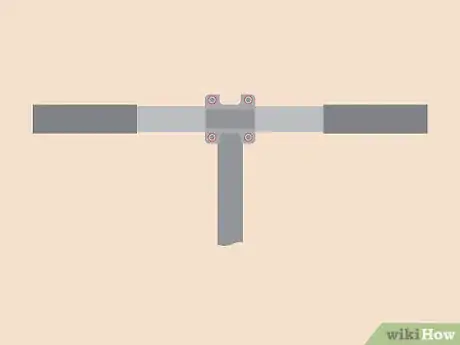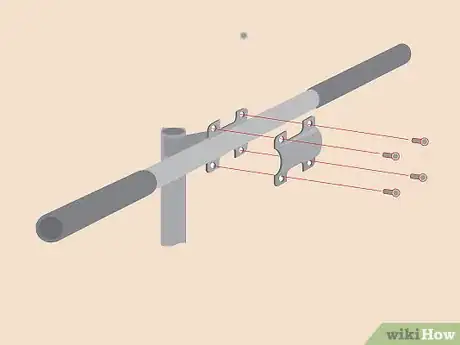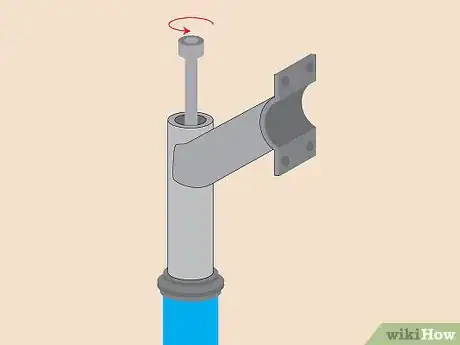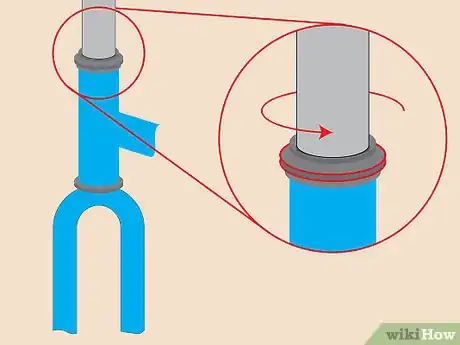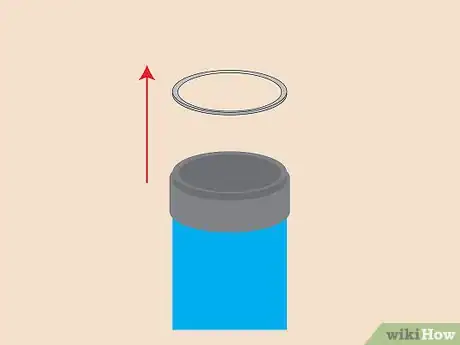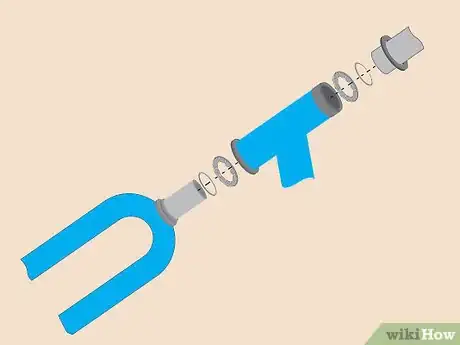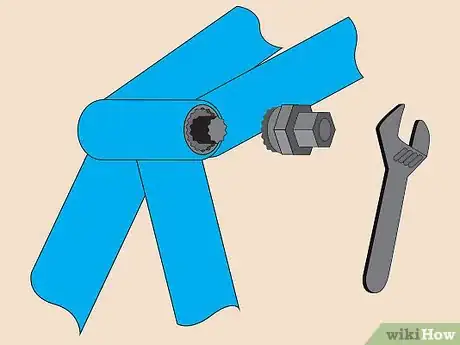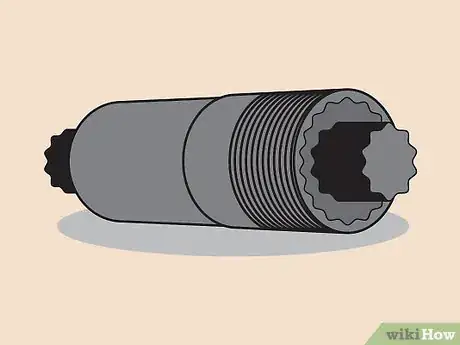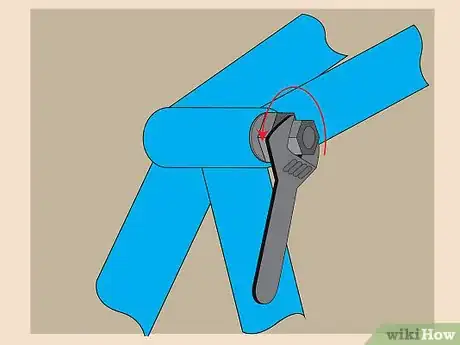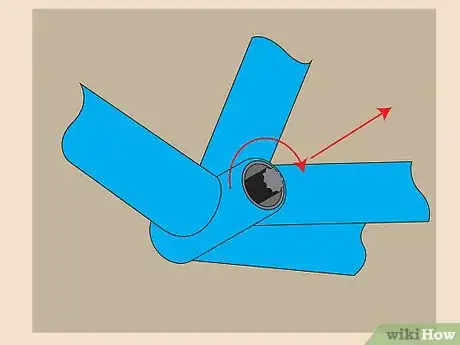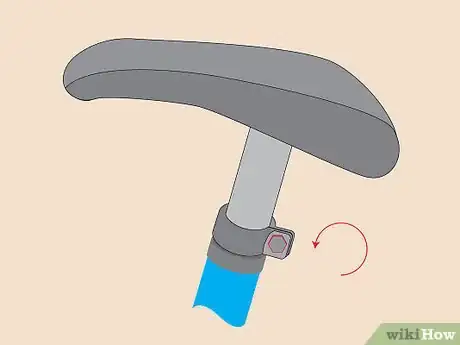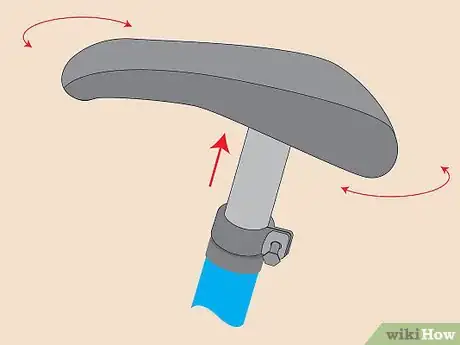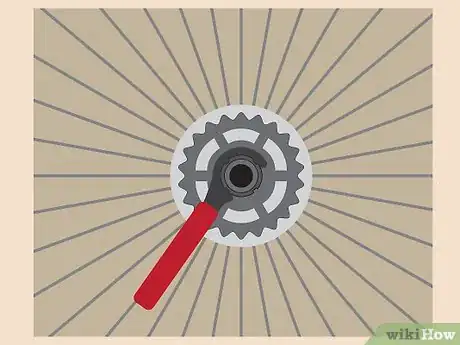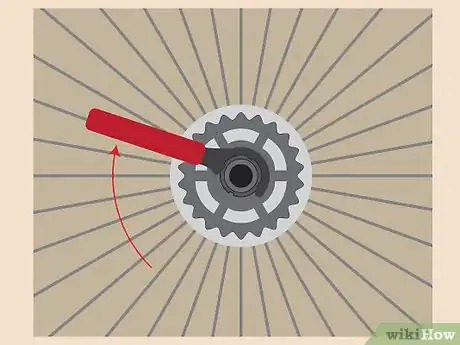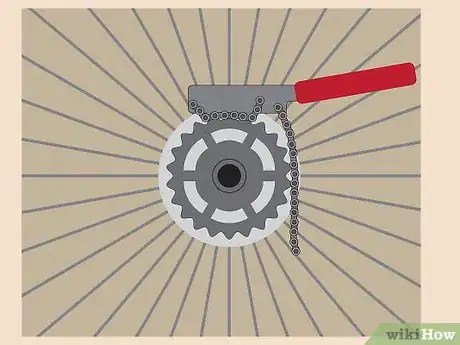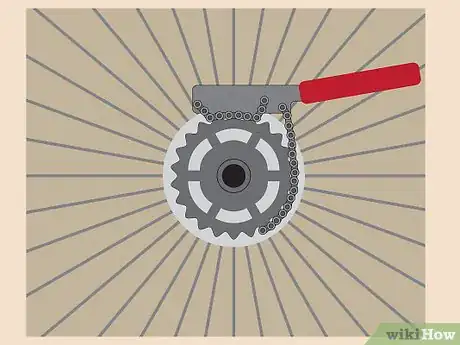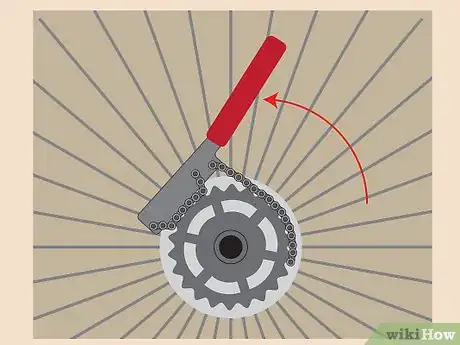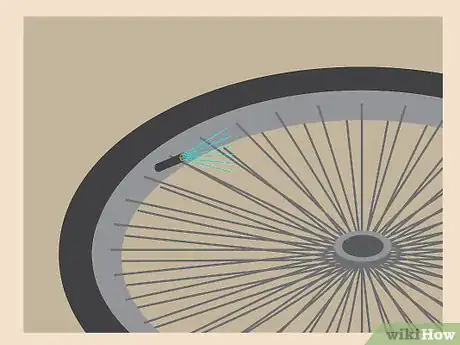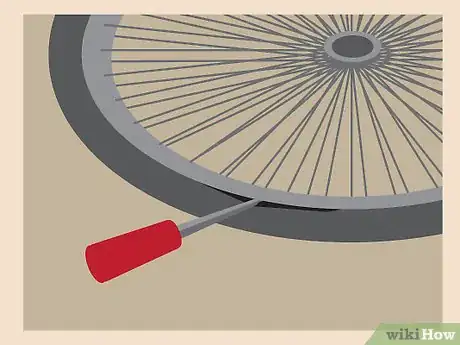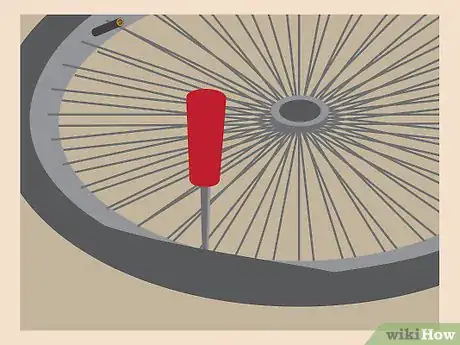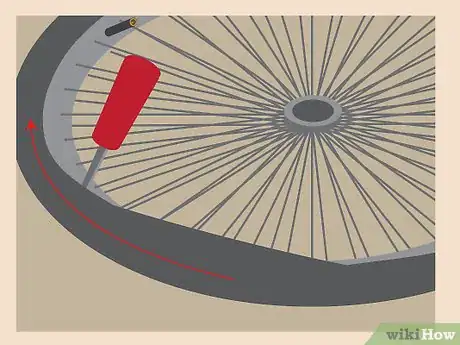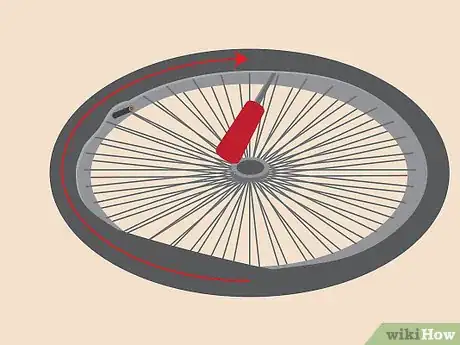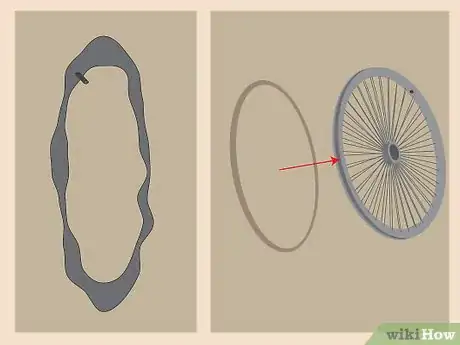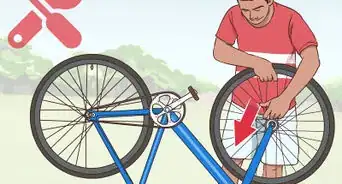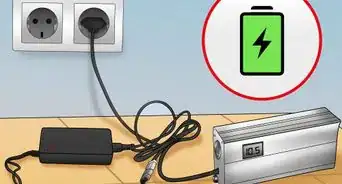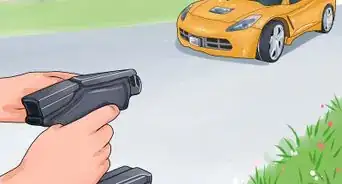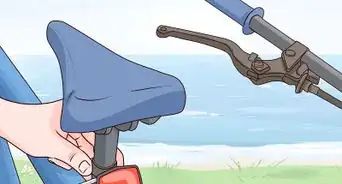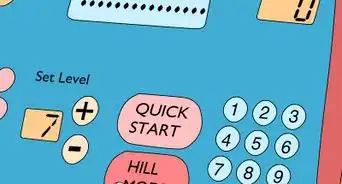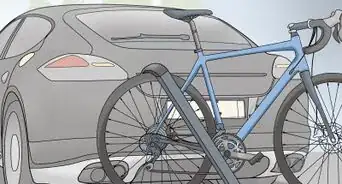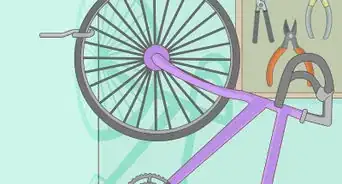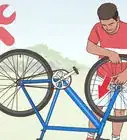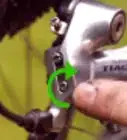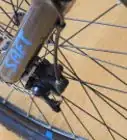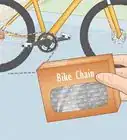wikiHow is a “wiki,” similar to Wikipedia, which means that many of our articles are co-written by multiple authors. To create this article, 22 people, some anonymous, worked to edit and improve it over time.
There are 16 references cited in this article, which can be found at the bottom of the page.
This article has been viewed 161,978 times.
Learn more...
Riding a bicycle is an increasingly popular activity for recreational as well as practical purposes. However, sometimes it becomes necessary to remove, replace, or clean certain parts of the bike.
A track bicycle is a type of bicycle (ridden with a single, often fixed gear) that is popular in urban areas for its simplicity, maneuverability, ease of maintenance and its style. In this article the maintenance and disassembly of such a bicycle will be discussed.
For the sake of convenience, this article assumes the bike in question has a fixed gear. This project is best done in a clean space, with a clean floor, as items with grease tend to pick up dirt and debris. This project can be done by anyone with the required tools, a bit of strength (for certain parts) and an interest in bicycle maintenance. This project may take anywhere from an hour to a day to complete, depending on your level of caution and familiarity with the parts.
Steps
For the most part, a lot of these steps can be done interchangeably, but removing the parts in the order in which they are listed is one sensible way to go about it. For example, the seat can be removed at any time; you may choose to leave it on to rest the bike on while it is upside-down while you remove the wheels. A bike repair stand can help hold the bike for many of the steps, but it is not necessary for this project.
Pedals
The pedals are an easy part to remove. Thread: the right crank (chain side) is threaded normally, the left side is threaded backwards.
Left Crank Arm
We will remove the left crank arm first, as the right crank arm is connected to the drivetrain and will be removed later. Thread: the crank puller screws into the crank with normal threads, on both cranks.
-
1Remove the dust cap and crank bolt from where the crank connects to the bottom bracket. This usually requires an allen wrench, but may vary depending on your crank brand and type.[3]
- Once this is removed, there will be exposed threads inside the crank arm, with the bottom bracket spindle visible inside.
-
2Unscrew the crank puller slightly, until the "pusher" part of the crank puller is recessed within the threaded part of the tool.[4]
-
3Screw the tool into the crank arm, gently at first. Make sure to screw this tool all the way in, as a great deal of pressure will be exerted on the threads when the cranks are removed.[5]
-
4Wind the tool's handle clockwise, screwing the "pusher" part of the tool back into the bolt that is now threaded into the crank. With some force, the crank will be pulled off of the bottom bracket spindle.[6]
Chain
With the rear wheel removed, the chain will hang loose on the chain ring and frame.
-
1Using the chain breaker tool, pick a link and clip it into the tool. This is done by placing the chain link between the teeth of the chain breaker in such a way that it sits snugly.[8]
-
2Using the tool like a vise, aim the arm at the small metal piece connecting the chain halves.[9]
-
3Screw in the tool until the metal piece is almost all the way out of the other side. The metal slug that connects the chain link pieces should remain in just one side of the chain link, removed only just enough to let the chain break free.[10]
- Be careful not to remove the piece entirely! It is extremely difficult to reinsert that piece into a chain.
- A good way to do this is to alternate between screwing the tool arm into the chain and removing it, checking to see if the chain has broken yet (you won't be able to tell while the chain is in the tool). Go slowly.
-
4Once the chain is separated, you can remove it entirely from the bike. Make sure to put it on a paper towel or other clean surface, where it will not collect dirt.
Brakes
-
1Unscrew the brake lever from the handlebars on the underside of the lever.
-
2Remove the brake lever from the handlebars, making sure to catch any supporting pieces that may fall.
-
3Unscrew the bolt that is driven into the brake through the fork.[11]
-
4Optional: This is a good opportunity to change your brake pads and clean your brakes.
- For caliper brakes, unscrew the small bolt on each side of the caliper brake that is attached to the brake pad itself.
- Once the brake pads are removed, unscrew the (smaller) screw on the pad/metal assembly itself, and slide the pad out of the metal piece it is attached to.
- Replace the pad by sliding a fresh one in. This is a worthwhile and inexpensive repair for your bike, since brake pads are cheap and are your best friend on the road.
Handlebars
-
1Remove the bolts from the stem that hold the handlebars tight.[12]
-
2Catch the faceplate piece when the last bolt is removed.
Stem
Be careful to hold the fork once the bolts attaching the stem to the top of the fork tube (including the headset bolt) are removed from the stem, as the it may fall out and delicate bearing pieces may break. This may or may not be an issue depending on whether your headset is part of a sealed assembly (the pictures shown are of a non-sealed headset).
-
1Unscrew the bolt on the cap on the stem.[13]
-
2Unscrew the bolts on the shaft of the stem. (This is the part where the fork can fall out.)
-
3Slide the stem up, off of the fork.
-
4Slide the spacer rings, if any, off of the fork.
-
5Remove the bearing ring from the cup of the frame. Place this ring on a clean paper towel or other surface. It is a good idea to clean and re-grease this with bearing grease.
- You can clean the ring by rubbing it with a paper towel in your hands, or with lube/cleaner.
- Be sure to re-grease this ring liberally; this is what rotates when you turn your handlebars to turn your bike. Ask your LBS (local bike store) for recommendations for bearing grease.
-
6Take careful note of the arrangement and direction of the bearing rings and supporting O-rings at this stage of the project. You will need to replace them exactly as they were.[14]
Fork
-
1Slide the fork down, out of the frame. Make sure not to lose the bearing ring on the fork that was resting in the lower cup of the frame.
-
2Slide the bearing ring and O-ring up, off the frame.[15]
Right Crank Arm
Perform the same steps to remove the right crank arm as you did with the left crank arm. This is made only slightly more awkward by the presence of the chain ring on the crank arm. The chain ring can be unscrewed from the crank arm at this point if replacement is desired. Just use the allen wrench to unscrew the screws from the crank arm.[16]
Bottom Bracket
Removing the bottom bracket is probably the hardest (at least in terms of strength) part of the process. You may need to take your frame to the LBS (local bike store) for this part, as some bottom brackets are installed with a minor locktite agent. Also note that bottom brackets come in a variety of standard designs, and bottom bracket tools may vary in shape. This article will discuss the removal of an ISIS-style bottom bracket. Thread: the bottom bracket cup is threaded normally. The bottom bracket itself is threaded backwards.
-
1Fit the bottom bracket tool over the bottom bracket spindle. The spindle itself is not very deep; as a result, this tool will easily come out when putting a lot of torque on the wrench to remove the bottom bracket. Be careful not to strip the splines or threads of the bottom bracket.
-
2The ISIS bottom bracket style has two parts, the lock ring cup and the main bottom bracket. These parts are threaded differently, and will require some trial and error to figure out which side the lock ring is on. The lock ring will be threaded normally, and will most likely unscrew somewhat easily (relative to the other side).
-
3Pick a side and turn counter-clockwise until the cup is removed.[17]
-
4Once the cup is removed off of the spindle, turn the frame over and remove the bottom bracket itself, by turning clockwise.[18]
Seat
Lock ring
Lock rings are found on the outer threads of the hubs on fixed gear bikes. They exist to keep the cog from un-threading when the bike is being pedaled backwards. They accomplish this by screwing onto the hub in a different direction than the cog, and fitting snugly against the cog. Thread: the lock ring is threaded backwards; this related to its purpose, since the lock ring is there to keep the cog from being unscrewed while riding a fixed gear.
Cog
Thread: the cog is threaded normally.
-
1Place the chain whip on the cog, on the chain part of the tool that does not hang loose.
-
2Using your hand, wrap the loose part of the chain whips chain around the cog and apply pressure to the cog directly opposite the other chain.
-
3Hold on tight and turn counter-clockwise to remove. You may have a hard time doing this; get someone else to help or get creative about how to hold the chain onto the cog.[23]
Tires
-
1Deflate the tube all of the way.[24]
-
2Insert the tire lever under the "clinch" part of the tire, between the rubber tire/tube and the metal rim.[25]
-
3Push up, lifting the lip of the tire off of the rim while simultaneously pushing down the length of the rim.[26]
-
4Once a part of the lip of the tire is over the edge of the rim, the rest will come easily.[27]
-
5Run the tool down the length of the wheel, removing the lip of the tire as you go.[28]
-
6Pull the valve out of the hole in the rim, and remove the tube from under the tire.
-
7At this point, one lip of the tire will be removed from the rim. Repeat the process for the other side.
-
8This is a good time to change your tube, or add a rim strip underneath the tube, if you get flat tires too frequently.
This shows the beginning of the process. There is a part two and part three.
Community Q&A
-
QuestionWhat tools do I need to disassemble a bike?
 Community AnswerYou would need a few Allen wrenches or hex keys; metric box wrenches and/or a ratchet with sockets of 8, 10, 14, and 15 mm sizes; needle nose pliers; flat-head and Philips screwdrivers; a crank removal tool for the specific crank; and an adjustable wrench.
Community AnswerYou would need a few Allen wrenches or hex keys; metric box wrenches and/or a ratchet with sockets of 8, 10, 14, and 15 mm sizes; needle nose pliers; flat-head and Philips screwdrivers; a crank removal tool for the specific crank; and an adjustable wrench. -
QuestionHow long should it take to disassemble a bike?
 Community AnswerIt depends on what type of bicycle it is. It may take longer if your bicycle has more components or older parts requiring special tools, for example. It will probably take at least a few hours if you've never done it before.
Community AnswerIt depends on what type of bicycle it is. It may take longer if your bicycle has more components or older parts requiring special tools, for example. It will probably take at least a few hours if you've never done it before.
Warnings
- Be careful with your fingers! When turning the wheels/pedals/cranks of a fixed gear bike when the chain is attached, avoid putting your fingers anywhere near the cog or chain. Since the bike does not have a freewheel, when you stop turning the wheels, the chain will continue to run. Your finger can get caught in the cog!⧼thumbs_response⧽
- Chain tension is very important on a fixed gear bike. Because the fixed gear is often a major source of braking power, it is important you keep the chain tight so it does not derail after hitting a bump in the road, or you could risk damaging yourself and the bike.⧼thumbs_response⧽
Things You'll Need
- Track bike
- Paper towels/cleaner
- General purpose lube/grease
- Allen wrench set
- Chain whip
- Crank puller
- Bottom bracket tool
- Wrench to turn the bottom bracket
- Tire levers
- Tire pump
- Lock ring tool
- Pedal wrench
- Chain breaker tool
References
- ↑ https://www.youtube.com/watch?v=YmPkYMPVqQU
- ↑ https://www.youtube.com/watch?v=YmPkYMPVqQU
- ↑ https://www.parktool.com/blog/repair-help/pedal-installation-and-removal
- ↑ https://www.parktool.com/blog/repair-help/pedal-installation-and-removal
- ↑ https://www.parktool.com/blog/repair-help/pedal-installation-and-removal
- ↑ https://www.parktool.com/blog/repair-help/pedal-installation-and-removal
- ↑ https://www.parktool.com/blog/repair-help/wheel-removal-and-installation
- ↑ https://www.carbibles.com/how-to-use-a-chain-breaker/
- ↑ https://www.carbibles.com/how-to-use-a-chain-breaker/
- ↑ https://www.carbibles.com/how-to-use-a-chain-breaker/
- ↑ https://www.parktool.com/blog/repair-help/brake-pad-replacement-rim-brakes
- ↑ https://www.parktool.com/blog/repair-help/handlebar-removal-installation-drop-bars
- ↑ https://www.parktool.com/blog/repair-help/stem-removal-installation-quill-stems
- ↑ https://www.parktool.com/blog/repair-help/stem-removal-installation-quill-stems
- ↑ https://www.youtube.com/watch?v=CY-Mj6huhvQ
- ↑ https://www.youtube.com/watch?v=zbza6CA6YSI
- ↑ https://www.parktool.com/blog/repair-help/bottom-bracket-removal-installation-threaded
- ↑ https://www.parktool.com/blog/repair-help/bottom-bracket-removal-installation-threaded
- ↑ https://www.youtube.com/watch?v=xq1pvvBJ6dc
- ↑ https://www.youtube.com/watch?v=ni20NKKe0GY
- ↑ https://www.parktool.com/blog/repair-help/cassette-removal-and-installation
- ↑ https://www.parktool.com/blog/repair-help/cassette-removal-and-installation
- ↑ https://www.parktool.com/blog/repair-help/cassette-removal-and-installation
- ↑ https://www.parktool.com/blog/repair-help/tire-and-tube-removal-and-installation
- ↑ https://www.parktool.com/blog/repair-help/tire-and-tube-removal-and-installation
- ↑ https://www.parktool.com/blog/repair-help/tire-and-tube-removal-and-installation
- ↑ https://www.parktool.com/blog/repair-help/tire-and-tube-removal-and-installation
- ↑ https://www.parktool.com/blog/repair-help/tire-and-tube-removal-and-installation
- Sheldon Brown (http://sheldonbrown.com)
- Bike Forums (http://www.bikeforums.net)
